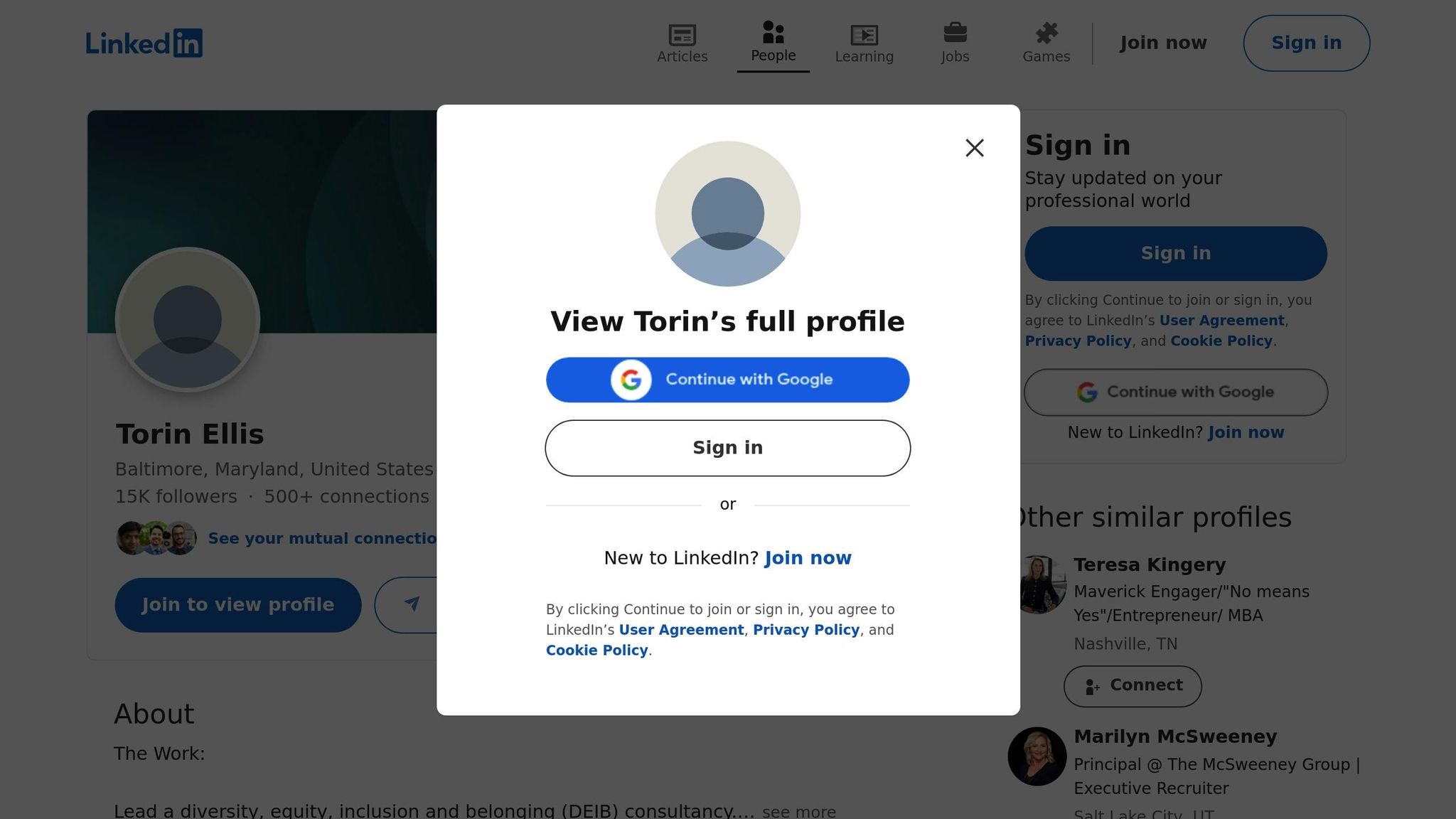AI in Leadership: Driving Diversity Strategies
Explore how AI is reshaping leadership diversity by reducing bias, enhancing skill evaluation, and improving accessibility in organizations.

AI is transforming leadership diversity by reducing bias, focusing on skills, and improving accessibility. Here’s how it works:
- Bias Detection: AI identifies exclusionary language in job postings and evaluations, suggesting inclusive alternatives.
- Skills-Based Evaluation: AI anonymizes candidate data and evaluates based on skills, not demographics.
- Accessibility Tools: Features like multilingual assistants and personalized learning paths make leadership opportunities more accessible.
Key Implementation Steps:
- Use AI-powered tools for anonymized resume screening and diversity data tracking.
- Set measurable goals and automate reporting to monitor progress.
- Train teams on AI usage and ethics to ensure responsible implementation.
By combining AI tools with human oversight, organizations can build leadership pipelines that truly reflect diversity and inclusion.
Can AI Reduce Bias? Insights from Torin Ellis on HR’s Biggest ...

Current Barriers to Leadership Diversity
Challenges remain in creating more inclusive leadership teams.
Bias in Hiring and Promotion Decisions
Unconscious biases, like favoring candidates who share similarities with decision-makers, often lead to leadership teams that lack diversity.
Challenges in Finding Diverse Candidates
The so-called 'pipeline problem' arises from several factors:
- Limited recruitment networks
- Strict qualification criteria that exclude non-traditional candidates
- A lack of mentorship opportunities for individuals from underrepresented groups
Issues with Tracking Progress
Efforts to monitor diversity initiatives often face setbacks due to:
- Privacy concerns that restrict demographic data collection
- A lack of accountability, making it hard to set and meet clear diversity goals
These challenges highlight the limitations of traditional approaches and pave the way for AI-based solutions to address these gaps. Up next, we’ll look at how AI tools can help tackle these barriers.
AI Solutions for Diversity Goals
AI helps identify gaps in hiring and promotions, supporting leadership diversity by detecting bias, focusing on skills, and improving accessibility. Some key tools in this space include systems for bias detection, skills-based assessments, and AI-powered accessibility features.
Bias Detection Systems
AI reviews job postings, performance evaluations, and feedback to spot exclusionary language. It highlights problematic terms and suggests more inclusive alternatives, helping to reduce bias in recruitment and promotions.
Skills-Based Evaluation Tools
AI-powered platforms create standardized evaluation criteria, hide demographic details, and focus on assessing specific skills and achievements. This ensures decisions are based on merit rather than unconscious biases.
Workplace Accessibility Tools
AI tools enhance accessibility through features like multilingual voice assistants, automated schedulers that handle time zone differences, and personalized learning paths for leadership development.
Next, we’ll explore how to put these AI-driven tools into practice to promote leadership diversity.
Implementing AI for Better Leadership Diversity
Now that we've covered AI's role in detecting bias and focusing on skills, here's how organizations can put these tools into action:
AI-Powered Resume Analysis
- Integrate anonymized screening API: Connect this with your applicant tracking system to remove personal identifiers during the hiring process.
- Set screening criteria: Base weightings on skills, experience, and achievements, using historical success data as a benchmark.
- Test with a pilot program: Conduct a 30-day trial comparing outcomes between demographic-neutral processes and traditional methods.
- Refine thresholds: Use pilot results to fine-tune the system for better outcomes.
Diversity Data Tracking
- Create a privacy-compliant dashboard: Track leadership diversity metrics while ensuring data privacy.
- Define measurable goals: Focus on metrics like representation ratios, promotion rates, and retention data.
- Automate reporting: Set up real-time alerts to flag deviations from diversity targets.
- Analyze trends: Regularly review data across departments and leadership levels to identify patterns.
AI Training Programs
- Design a specialized curriculum: Cover topics like AI bias, interpreting models, and using AI for decision-making.
- Host workshops: Schedule monthly sessions for HR and leadership teams to understand and utilize AI insights effectively.
- Appoint an AI ethics champion: Assign someone to oversee quarterly audits of AI systems.
- Establish feedback loops: Align insights from AI tools with leadership development programs to ensure continuous improvement.
Guidelines for Responsible AI Use
When using AI-powered tools, it's essential to include ethical measures to ensure fairness and retain human oversight. While automation can assist with tasks like resume screening and data analysis, human judgment remains critical, especially in diversity-focused initiatives.
Balancing Automation with Human Judgment
AI should work alongside humans, enhancing decision-making rather than replacing it. To achieve this balance:
- Clearly define the areas where AI decisions apply.
- Include human reviews at key decision points.
- Keep detailed logs of AI decisions to maintain transparency.
- Establish clear paths for handling exceptions or unusual cases.
Monitoring AI Systems
Regularly checking and validating AI systems is necessary to ensure they stay accurate and fair over time. This includes:
- Monitoring key metrics to identify any deviations or biases.
Fostering a Supportive Workplace Culture
Integrating AI successfully requires a workplace culture that values both technology and human expertise. To encourage this:
- Offer training programs to improve AI literacy and skill development.
- Use updates and feedback sessions to share results and gather insights.
- Align AI projects with clear diversity objectives to reinforce organizational values.
Conclusion
AI is helping turn leadership diversity from an ideal into a measurable reality by minimizing bias, improving how candidates are evaluated, and strengthening inclusive hiring practices. With tools like bias detection systems, skills-focused evaluations, and accessibility features, organizations can create leadership pipelines that genuinely support inclusion.
When AI tools are combined with people-focused development and a clear organizational commitment, diverse leadership becomes more achievable. This approach drives meaningful change through the thoughtful use of bias detection, skills assessments, and accessibility tools.




